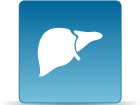Chloroform
CASRN 67-66-3 | DTXSID1020306
- Toxicological Review (PDF) (112 pp, 759 K)
- IRIS Summary (PDF) (41 pp, 234 K)
- Status: Chloroform is in step 3 at this time; see Quick Check.
Noncancer Assessment
Reference Dose for Oral Exposure (RfD) (PDF) (41 pp, 234 K)
Last Updated: 10/19/2001
| System | RfD (mg/kg-day) | Basis | PoD | Composite UF | Confidence |
|---|---|---|---|---|---|
| Hepatic | 1 x 10-2 | Moderate/marked fatty cyst formation in the liver and elevated SGPT |
BMDL10
: 1.0 mg/kg-day |
100 | Medium |
Reference Concentration for Inhalation Exposure (RfC) (PDF) (41 pp, 234 K)
Not assessed under the IRIS Program.
Cancer Assessment
Weight of Evidence for Cancer (PDF) (41 pp, 234 K)
Last Updated: 10/19/2001
| WOE Characterization | Framework for WOE Characterization |
|---|---|
| B2 (Probable human carcinogen - based on sufficient evidence of carcinogenicity in animals) | Guidelines for Carcinogen Risk Assessment (U.S. EPA, 1986) |
| Likely to be carcinogenic to humans | Revised Draft Guidelines for Carcinogen Risk Assessment (U.S. EPA, 1999) |
| Not likely to be carcinogenic to humans | Revised Draft Guidelines for Carcinogen Risk Assessment (U.S. EPA, 1999) |
- Under the Proposed Guidelines for Carcinogen Risk Assessment (U.S. EPA, 1996; U.S. EPA, 1999), chloroform is likely to be carcinogenic to humans by all routes of exposure under high-exposure conditions that lead to cytotoxicity and regenerative hyperplasia in susceptible tissues (U.S. EPA, 1998a,b). Chloroform is not likely to be carcinogenic to humans by any route of exposure under exposure conditions that do not cause cytotoxicity and cell regeneration.
This weight-of-evidence conclusion is based on: 1) observations in animals exposed by both oral and inhalation pathways which indicate that sustained or repeated cytotoxicity with secondary regenerative hyperplasia precedes, and is probably required for, hepatic and renal neoplasia; 2) there are no epidemiological data specific to chloroform and, at most, equivocal epidemiological data related to drinking water exposures that cannot necessarily be negative, although there are some scattered positive results that generally have limitations such as excessively high dose or with confounding factors. Thus, the weigh-of-evidence of the genotoxicity data on chloroform supports a conclusion that chloroform is not strongly mutagenic, and the genotoxicity is not likely to be the predominant mode of action underlying the carcinogenic potential of chloroform. Although no cancer data exist for exposures via the dermal pathway, the weight-of-evidence conclusion is considered to be applicable to this pathway as well, because chloroform absorbed through the skin and into the blood is expected to be metabolized and to cause toxicity in much the same way as chloroform absorbed by other exposure routes. - This may be a synopsis of the full weight-of-evidence narrative.
WOE Note: 1. Likely to be carcinogenic to humans by all routes of exposure under high-exposure conditions that lead to cytotoxicity and regenerative hyperplasia. 2. Not likely to be carcinogenic to humans by any route of exposure under exposure conditions that do not cause cytotoxicity and cell regeneration.
Quantitative Estimate of Carcinogenic Risk from Oral Exposure (PDF) (41 pp, 234 K)
A dose of 1 x 10-2 mg/kg-day (equal to the RfD) can be considered protective against cancer risk.
Quantitative Estimate of Carcinogenic Risk from Inhalation Exposure (PDF) (41 pp, 234 K)
Inhalation Unit Risk:
2.3 x 10 -5 per µg/m3
Extrapolation Method:
Linearized multistage procedure, extra risk
Tumor site(s): Hepatic
Tumor type(s): Hepatocellular carcinoma (NCI, 1976)
- Human Health Benchmarks for Pesticides (HHBP). This database provides human health benchmarks for pesticides that may be present in drinking water.
- Office of Pesticide Programs Pesticide Chemical Search. This database provides links to health effects information and registration status for pesticides.
- Chemistry Dashboard. This database provides information on chemical structures, experimental and predicted physicochemical, and toxicity data.
Chloroform is being reassessed.
Assessment Manager(s): Audrey Galizia (galizia.audrey@epa.gov)
| Step | Assessment Materials Released to the Public | Release Date | Public Meeting Date |
|---|---|---|---|
| 1 | Problem Formulation Materials | 09/2017 | 09/2017 |
| 1 | Preliminary Assessment Materials | 01/2018 | N/A |
| 4 | Public Comment Draft | 10/2023 | TBD |
| 4 | Peer Review Draft | N/A | 01/2024 |
| 7 | Post Final Assessment | TBD |
Please note: Any future dates displayed under Release Date are estimates and subject to change.
You will need Adobe Reader to view some of the files on this page. See EPA’s PDF page to learn more.
Quick Check




